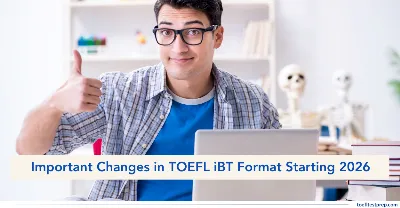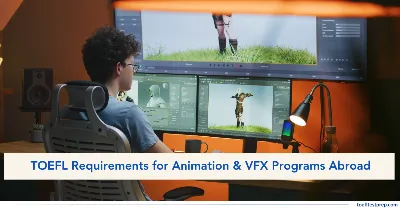How to Answer TOEFL iBT® Reading Factual Information Questions

"In the TOEFL Reading factual information tasks, you need to identify the key facts or details from a passage that directly answer the question. This question type tests your ability to locate and comprehend essential details within the text."
Key Highlights
Factual information questions in TOEFL Reading require you to identify and select details or facts directly stated in the passage. These questions assess your ability to pick out specific information from the text that answers the question directly and correctly. Let’s explore effective strategies to tackle TOEFL Reading Factual Information Questions with confidence and accuracy.
Struggling with reading comprehension?
Check out our TOEFL Reading Practice Tests to boost your skills and ace the exam!
How to Answer TOEFL Reading Factual Information Questions
Here are some expert tips to help you master Factual Information Questions in the TOEFL Reading section and improve your performance:
1. Understand the Question Type
Factual information questions are those kinds of questions that ask for details or facts within the passage that corresponds to the question. You should be able to read the correct answer directly from the text; hence, you have to read the passage carefully to find that information.
Example:
Passage: ‘Sara, an artist, visited the art museum for the first time. She admired the Renaissance paintings, particularly those by Leonardo da Vinci.’
Question: What did Sara admire during her visit to the museum?
Answer Choices:
A) Modern sculptures
B) Ancient artifacts
C) Renaissance paintings
D) Contemporary art
Answer: The correct answer is C) Renaissance paintings, as it directly matches the information provided in the passage.
2. Scan for Keywords
First, identify keywords in the question and scan the passage for those or synonyms of those. When you find the place where those words occur, that is likely to be where you will find your answer.
Example:
Passage: ‘Sara’s visit to the museum included a guided tour where she learned about various art movements, including Impressionism.’
Question: What did Sara learn about during the guided tour?
Answer Choices:
A) Renaissance art
B) Impressionism
C) Modern sculptures
D) Baroque art
Answer: The correct answer is B) Impressionism, as it is mentioned in the passage.
3. Eliminate Incorrect Answers
Read each answer choice carefully and eliminate the choices that do not match the details provided in the passage. Only one answer will reflect factual information in the text.
Example:
Passage: ‘Sara’s favourite painting was the Mona Lisa, which she found captivating due to its mysterious expression.’
Question: What was Sara’s favourite painting?
Answer Choices:
A) The Last Supper
B) Starry Night
C) The Mona Lisa
D) The Scream
Answer: The correct answer is C) The Mona Lisa. All other choices do not match the information in the passage.
Check out - Common TOEFL Reading Section Difficulties
4. Look for Direct Statements
Factual information questions are always based on direct statements in the passage. Take time to find the exact sentence or phrase that answers your question.
Example:
Passage: ‘During her visit, Sara learned that the museum houses the largest collection of Renaissance art in the country.’
Question: What did Sara learn about the museum?
Answer Choices:
A) It has a small collection of Renaissance art.
B) It has the largest collection of Renaissance art in the country.
C) It only displays modern art.
D) It is the oldest museum in the country.
Answer: The correct answer is B) It has the largest collection of Renaissance art in the country, as this is directly stated in the passage.
5. Verify Your Answer
After choosing the correct answer, refer again to the passage to double-check that your choice actually matches the information provided.This step helps ensure accuracy and reduces the chances of making mistakes.
Example:
Passage: ‘Sara admired the vibrant colours used in the Renaissance paintings, particularly in works by Raphael.’
Question: What did Sara admire about Raphael’s works?
Answer Choices:
A) The use of vibrant colours
B) The depiction of modern life
C) The abstract forms
D) The dark tones
Answer: The correct answer is A) The use of vibrant colours, as it is directly mentioned in the passage.
6. Pay Attention to Numbers and Dates
Pay closer attention when you come across numbers, dates, or quantities in the passage. Factual information questions most of the time concern such facts; sometimes asking you just to recall them, other times to compare.
Example:
Passage: ‘Sara visited the art museum on July 5th and spent 3 hours exploring the exhibits.’
Question: On which date did Sara visit the museum?
Answer Choices:
A) June 15th
B) July 5th
C) August 1st
D) July 15th
Correct Answer: B) July 5th
Also Check: How to Improve TOEFL iBT® Reading Skills
7. Watch Out for Paraphrasing
The passage may use paraphrased information instead of exact wording from the question, so you have to understand the core meaning, rather than look for identical phrasing.
Example:
Passage: ‘Sara, an artist herself, admired the Renaissance paintings for their intricate details.’
Question: What did Sara think of the Renaissance paintings?
Answer Choices:
A) Sara disliked the Renaissance paintings.
B) Sara was indifferent to Renaissance paintings.
C) Sara appreciated the detailed nature of Renaissance art.
D) Sara found the Renaissance paintings too simplistic.
Correct Answer:
C) Sara appreciated the detailed nature of Renaissance art.
8. Practice Regularly
The more you practice factual information questions, the better you'll become at finding key details quickly and selecting the right answer. Take practice passages to sharpen your skills.
I hope this blog on how to answer TOEFL Reading Factual Information Questions was helpful for you. By applying these strategies and practicing regularly, you’ll improve your accuracy and confidence. Best of luck with your TOEFL preparation!
Also Read:
Featured Articles

TOEFL Format Undergoing Significant Changes in January 2026
The TOEFL iBT format is changing in January 2026 with a smarter structure and easier scoring. Here’s everything you need to know to stay ahead.
August 06, 2025
Minimum TOEFL Score Requirement for South Korea Student Visa
Understand the TOEFL requirement for a South Korea student visa and English-taught programs, and prepare your application for success.
September 14, 2025
Minimum TOEFL Score for Study Visa in Poland
Understand TOEFL score requirements for securing a Poland student visa and joining top universities offering English-taught programs.
September 14, 2025
TOEFL Requirements for Animation & VFX Programs Abroad
Discover TOEFL score requirements for studying Animation and VFX abroad, and learn how to meet them for top creative universities.
September 14, 2025